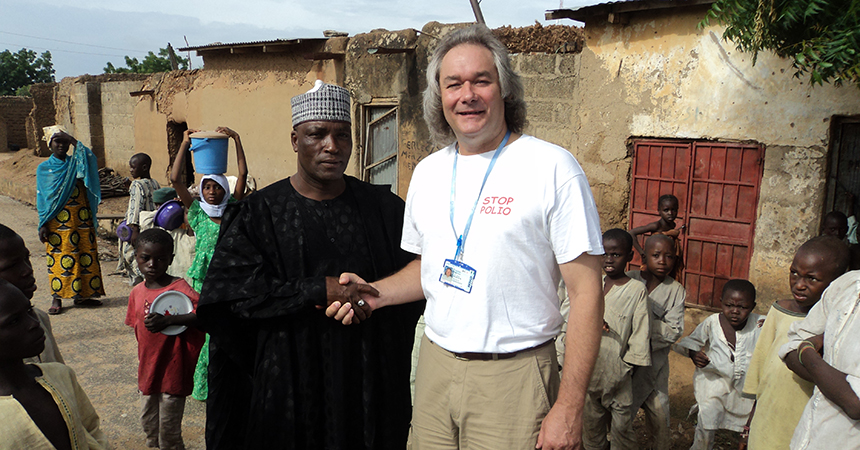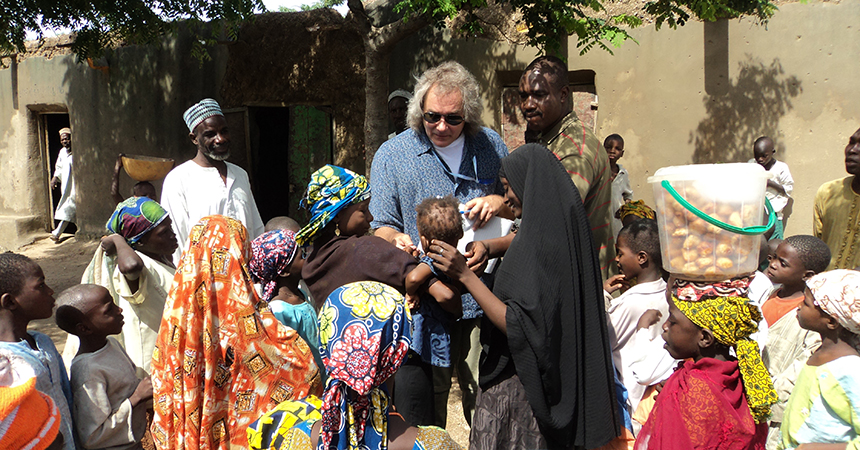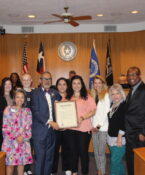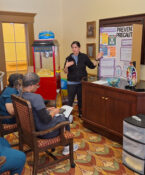Epidemiologist says universal response to disease, including COVID-19, is essential
Earlier this year, HSC alumnus Witold Migala, PhD, MPH, was busy wrapping up his leadership year as President of the Texas Public Health Association (TPHA), typically culminating in the organization’s annual conference and passing of the gavel to a new slate of officers.
This year, however, was very different.
As alerts about a quickly developing new strain of coronavirus, COVID-19, became increasingly concerning to public health officials around the world, TPHA leaders were faced with a dilemma.
What information and guidance would be most helpful to the hundreds of TPHA members across the state as they prepared to face a quickly unfolding, potentially life-threatening pandemic? Could the conference even go on as scheduled as a model for hosting safe public gatherings. And if not, how could TPHA best support those on the front lines of the state’s public health response?
“Our initial plan was to hold the conference as scheduled, addressing the new situation by having attendees focus on social distancing, personal protective practices, personal hygiene and other interventions for preventing spread of the disease. However, it soon became apparent that the event would have to be cancelled,” Dr. Migala said. “The best course for TPHA was to support our membership in other ways.”
Lessons from experience
Dr. Migala is no newcomer to the science of infectious diseases and disease prevention. The epidemiologist has traveled to some of the most remote communities around the world on behalf of the CDC, World Health Organization and United Nations, administering vaccines to fight polio and supporting response efforts to outbreaks of cholera, guinea worm and typhoid fever.
“COVID-19 has definitely emphasized the universality of disease and how what happens in other places can affect us all. Disease is the great equalizer, and a unified response is key, because we are all in this together,” he said.
Public health has faced and effectively responded to a number of emerging threats in the recent past.
The mosquito-borne Zika virus, first discovered in Uganda in 1947, primarily affected Africa and Asia. But by 2016, its spread had been reported in more than 20 countries as travelers began carrying infections worldwide.
“In the last three years, researchers have found less correlation between Zika and birth defects than initially thought, with possible other factors, like environmental exposure, that could have impacted mothers and children. However, the reaction to this potential threat demonstrated how pervasively disease can affect day-to-day life,” Dr. Migala said.
West Nile virus, discovered in 1937 in eastern Africa, is still with us today, spread globally from infected birds to mosquitos and then humans. Surveillance and prevention efforts for most communities are now ongoing, especially during warmer months, as is the case with HSC’s partnership with the City of Fort Worth and Tarrant County Public Health.
Ebola, another life-threatening infectious disease, discovered in Africa in 1976, became a global epidemic from 2014-2016 when it spread across borders to the U.S. and other parts of the world.
“The worldwide spread of Ebola is an important example of social injustice,” Dr. Migala said. “Here’s a disease that has ravaged a number of third- and fourth-world countries for years, but once it jumped into Western countries, it took only a year to develop a viable vaccine.”
“The lesson here is that regardless of who is immediately affected, globalization requires that disease be treated as if it affects everyone … because ultimately, it does.”
The view today
With COVID-19, Dr. Migala said, we all may have to live with the virus threat for a while as viable treatment, a cure or vaccine is developed.
A major concern is that many people can have COVID-19 and never feel sick, passing it on to others without knowing.
There is also what scientists call the RO, or “R-naught,” factor. R naught is a mathematical term regarding how contagious an infectious disease can be.
“With seasonal flu, the R naught is roughly 1.3, or about a one-to-one-person transmission potential. With COVID-19, it was at first thought that one person could possibly infect 2-3 others, but scientists are now seeing that it could go as high as 5 to 6,” Dr. Migala said.
Estimates vary, depending on length and frequency of exposure and certain other factors, and it’s important to note that RO is not necessarily a constant number. What helps to lower negative outcomes, as the CDC advises, is to limit personal contact while scientists work on solutions.
“Right now, we have to err on the side of caution, to do all we can to interrupt transmission and extinguish the spread of this disease,” Dr. Migala said. “On a reassuring note, most cases are moderate and are resolving themselves as people stay home. Test kits are becoming more accessible for those most seriously affected.”
Doing our part
Knowing what we face and learning how to do our part is an essential element of public health problem solving, he said.
“The ‘public’ in public health is our greatest resource. A time-proven model when faced with a public health challenge is to establish a rapport with the public that creates an atmosphere of trust,” Dr. Migala said.
“Traditionally, this is best done by explaining the situation, accurately presenting the risks and resources, and providing demonstrable reassurances. This transparency helps enlist the public’s support and cooperation, making interventions more effective,” he said.
The public health tools currently being employed have worked in the past in controlling the spread of many infectious diseases, including typhoid, tuberculosis, diphtheria, tetanus, whooping cough, cholera, plague, SARS, MERX, the seasonal flu and others.
Efforts are most effective when in coordination between communities both local and distant, Dr. Migala said.
“History has taught us that by working together we will eventually overcome this disease,” Dr. Migala said. “The social justice and health equity issues related to protecting all populations are critical in preventing and responding to disease. As such, no community is isolated. This is especially true in the contemporary global community. Only when others are healthier, so are we all.”





![Uyen Sa Nguyen Scaled[58]](https://www.unthsc.edu/newsroom/wp-content/uploads/sites/16/Uyen-Sa-Nguyen-scaled58-145x175.jpg)

Social media